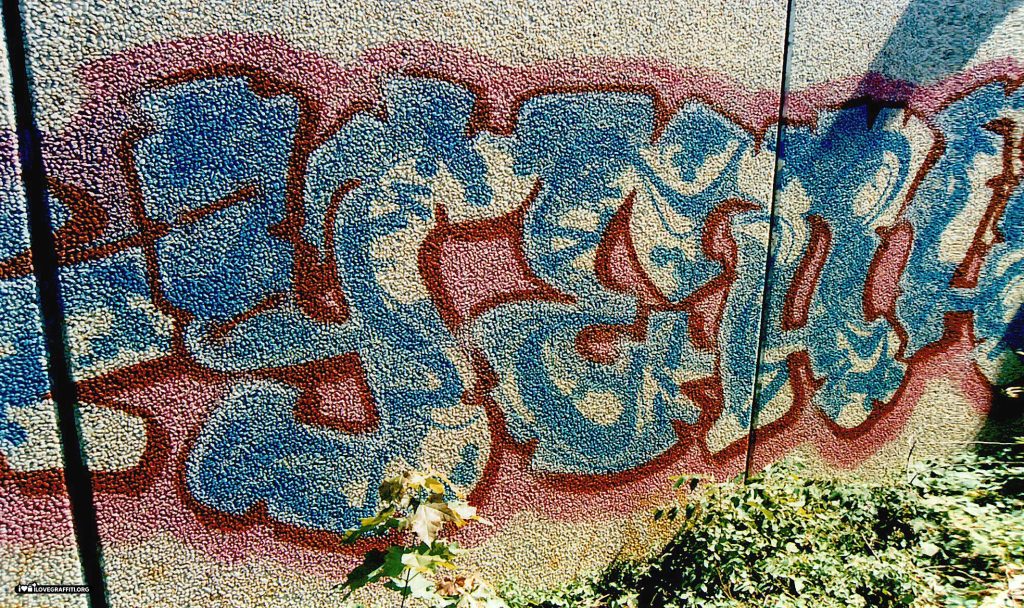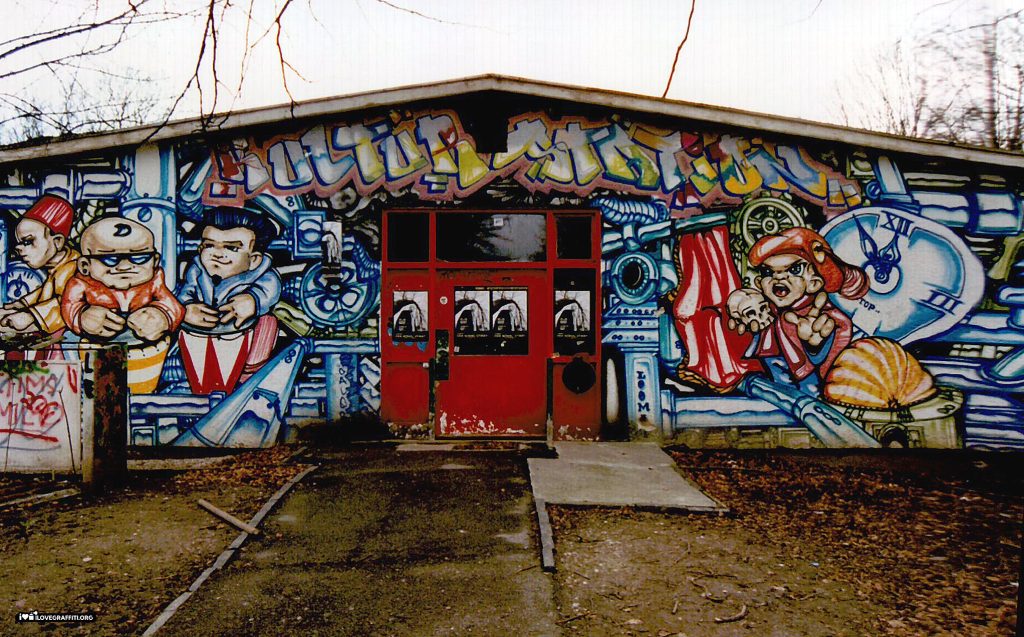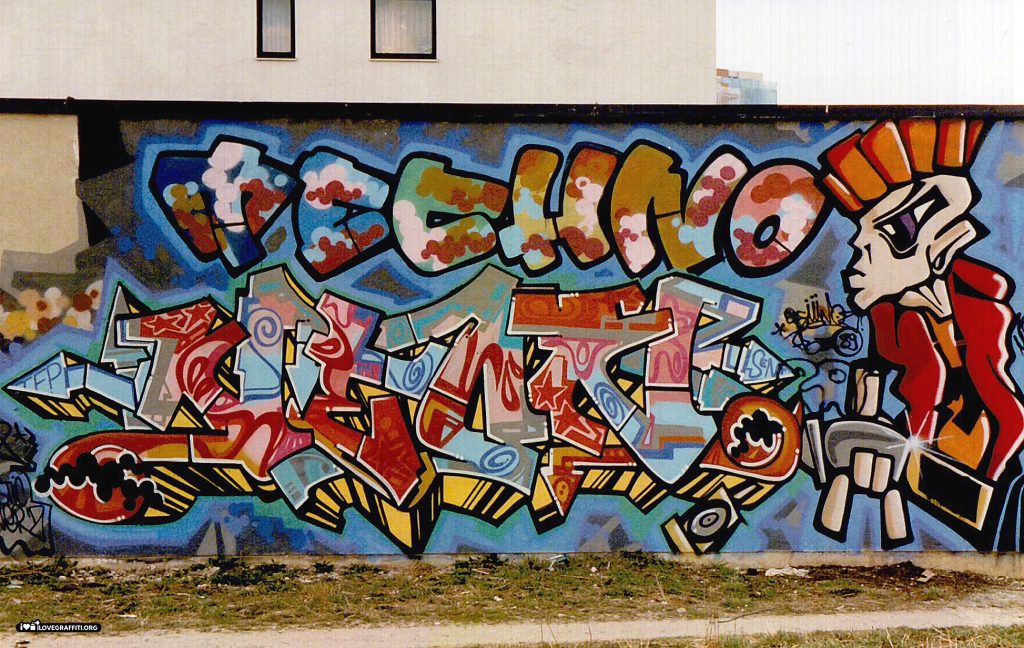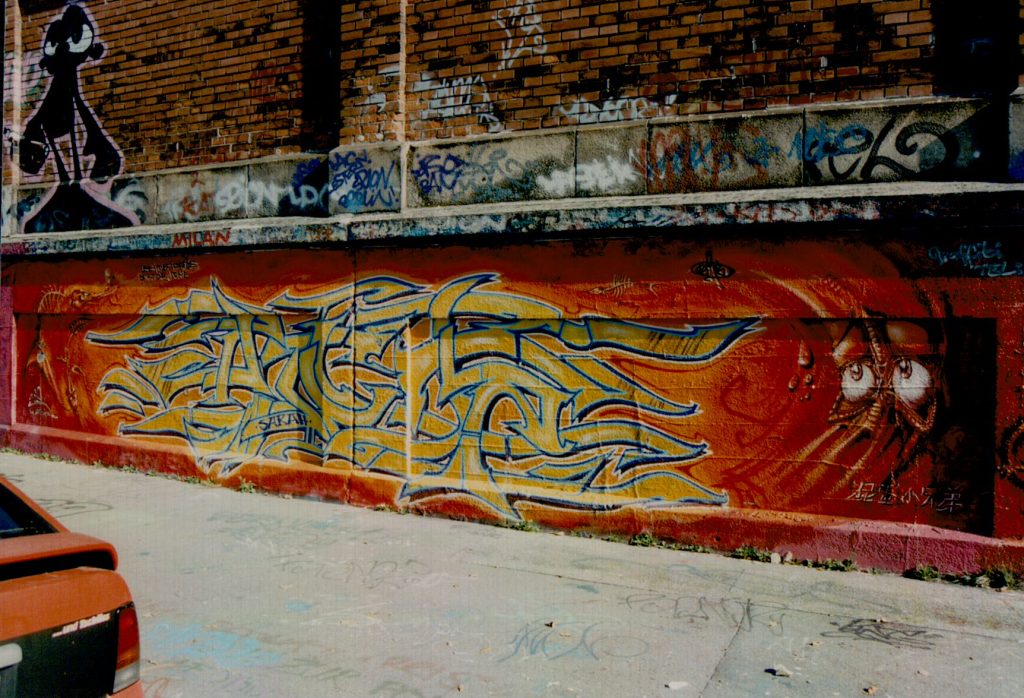Munich graffiti galleries, A-Z
Munich in colors: The history of graffiti in the 80s and 90s
Munich, a city known not only for its classic art scene, but also for its role as the birthplace of the German graffiti movement. In the 80s and 90s, the Bavarian metropolis experienced a creative explosion as the streets became canvases and graffiti became a vibrant expression of urban art.
The roots go back to the 70s, when the enigmatic word “Heiduk” appeared on Munich house walls. A foretaste of what was to come, as Munich would soon go down in history as the birthplace of the German graffiti movement.
The early 80s not only brought hip-hop to Munich, but also the first graffiti elements. Inspired by international trends, local artists began to paint the streets. Films such as “Wild Style” served as a catalyst that got Munich’s youth excited about the up-and-coming art form.
The high point of this era manifested itself in Geltendorf in 1985, when artists covered an entire S-Bahn train in paint, creating Europe’s first “Whole Train”. This groundbreaking act brought not only local but also international attention to the burgeoning graffiti scene in Munich.
The pioneering work of the graffiti artists was not without controversy. The railroad police founded the first German special graffiti commission in response to the “Whole Train”. Nevertheless, Munich became a pioneer in the legalization of graffiti in the 1990s. The creation of legal graffiti areas such as the Friedensengel underpass demonstrated the incipient acceptance of this urban art form.
Munich’s cultural wealth, characterized by art galleries and aesthetic sensibility, had a significant influence on the graffiti scene. In a city that combines tradition and modernity, the street became a canvas on which artists could freely develop their creative impulses.
